This post was printed in the March 2014 issue of Doors & Hardware
[Click here to download the reprint of this article.]
Many hollow metal frames used in health care facilities have terminated stops, also known as “hospital stops” or “sanitary stops.” A terminated stop is a modification to a door frame, where the stop is terminated above the floor – usually at 4 inches, 6 inches, or 8 inches from the bottom of the frame. The bottom of the stop is closed at a 45-degree or 90-degree angle. The purpose of a terminated stop is to make it easier to clean that area of the floor without the extra corners to catch debris or pathogens, and to avoid getting cart or bed wheels caught on the stop.
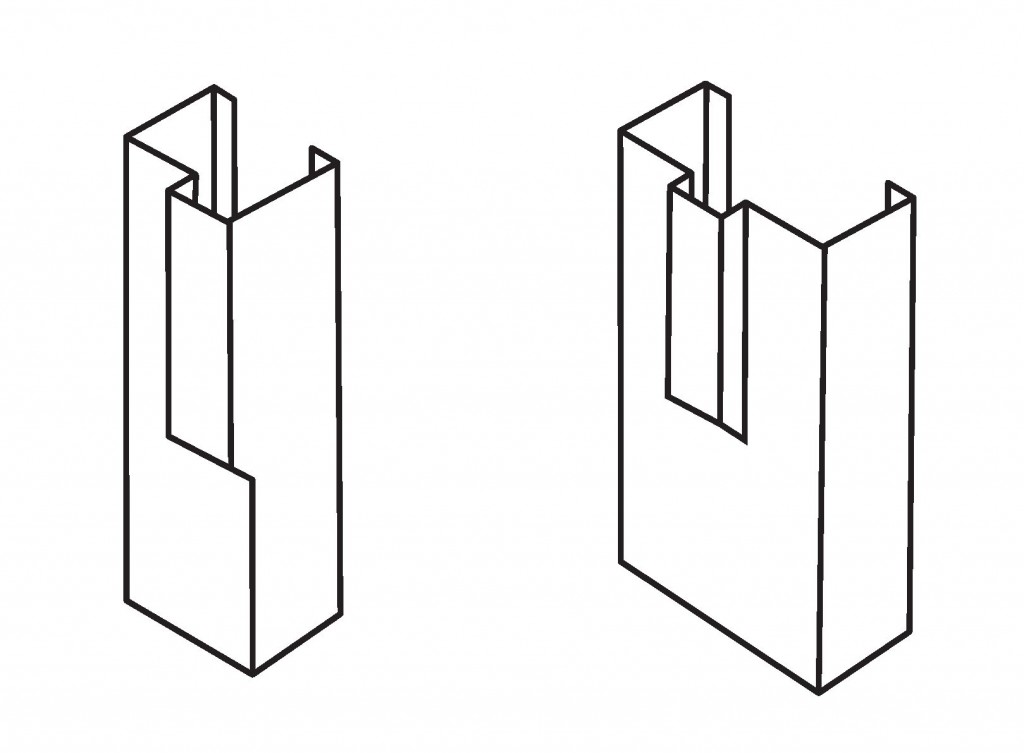 A common code question relative to terminated stops is whether they are acceptable on fire door assemblies, especially because many fire door assemblies are required by current codes to have smoke gasketing. While you may not find a specific reference to smoke gasketing in codes or standards, the International Building Code (IBC) requires smoke and draft control doors to have limited air infiltration – a maximum of 3.0 cubic feet per minute per square foot of door opening at 0.10 inch of water for both the ambient temperature test and the elevated temperature exposure test, when tested in accordance with UL 1784 – Air Leakage Tests of Door Assemblies. NFPA 101 – The Life Safety Code, and NFPA 105 – Standard for the Installation of Smoke Door Assemblies and Other Opening Protectives also include this limitation on air infiltration for certain door types. In order to meet this requirement, gasketing at the head and jambs is typically needed.
A common code question relative to terminated stops is whether they are acceptable on fire door assemblies, especially because many fire door assemblies are required by current codes to have smoke gasketing. While you may not find a specific reference to smoke gasketing in codes or standards, the International Building Code (IBC) requires smoke and draft control doors to have limited air infiltration – a maximum of 3.0 cubic feet per minute per square foot of door opening at 0.10 inch of water for both the ambient temperature test and the elevated temperature exposure test, when tested in accordance with UL 1784 – Air Leakage Tests of Door Assemblies. NFPA 101 – The Life Safety Code, and NFPA 105 – Standard for the Installation of Smoke Door Assemblies and Other Opening Protectives also include this limitation on air infiltration for certain door types. In order to meet this requirement, gasketing at the head and jambs is typically needed.
By removing the stop at the bottom of the frame on a fire door assembly with terminated stops, the surface where gasketing is applied would also be removed. And without the stop to inhibit air flow, some have questioned how this would affect the UL 1784 testing. A similar question is often raised with regard to door bottom seals; are door sweeps or automatic door bottoms needed when UL 1784 testing is required by a code or standard?
The language in the IBC has been changed slightly and clarified since the 2000 edition where this requirement was introduced, but as additional clarification, the International Code Council issued an IBC Interpretation (#31-03) on December 15, 2003, which clearly answers the question:
Q: Section 714.2.3 (2000 IBC) requires fire doors to be tested for smoke- and draft-control in accordance with UL 1784 with an artificial bottom seal. Is an artificial bottom seal required as part of the final installation of a fire door?
A: No. The artificial bottom seal is a component of the UL 1784 testing protocol and is not a requirement of the final door installation.
The UL 1784 test standard states, “In order to obtain information on the extent of air leakage at the ungasketed bottom gap of a test sample, an artificial seal may be applied to the bottom 6 inches (152.4 mm) of the test sample. The artificial seal may be any material, such as an impermeable sheet or tape.” By testing air infiltration with the artificial bottom seal in place, any air that would have passed through the bottom 6 inches of the door opening is not considered, so leakage at the balance of the perimeter can be accurately measured.
If you’re wondering why the leakage at the bottom of the door is not taken into account, I can speak from first-hand experience after witnessing a fire test last year. When a fire door assembly is subjected to a positive pressure fire test (UL 10C or NFPA 252 with the neutral pressure plane at 40 inches above the floor), very little smoke passes beneath the door during the test. Because of the location of the neutral pressure plane, the air is drawn toward the fire below the door, and pushed out away from the fire above the neutral pressure plane – basically above the typical lock height. The positive pressure test is designed to accurately replicate the conditions encountered during an actual fire, so if smoke does not pass below the door during the fire test, openings in this area of the fire door assembly should not be of major concern in a fire situation.
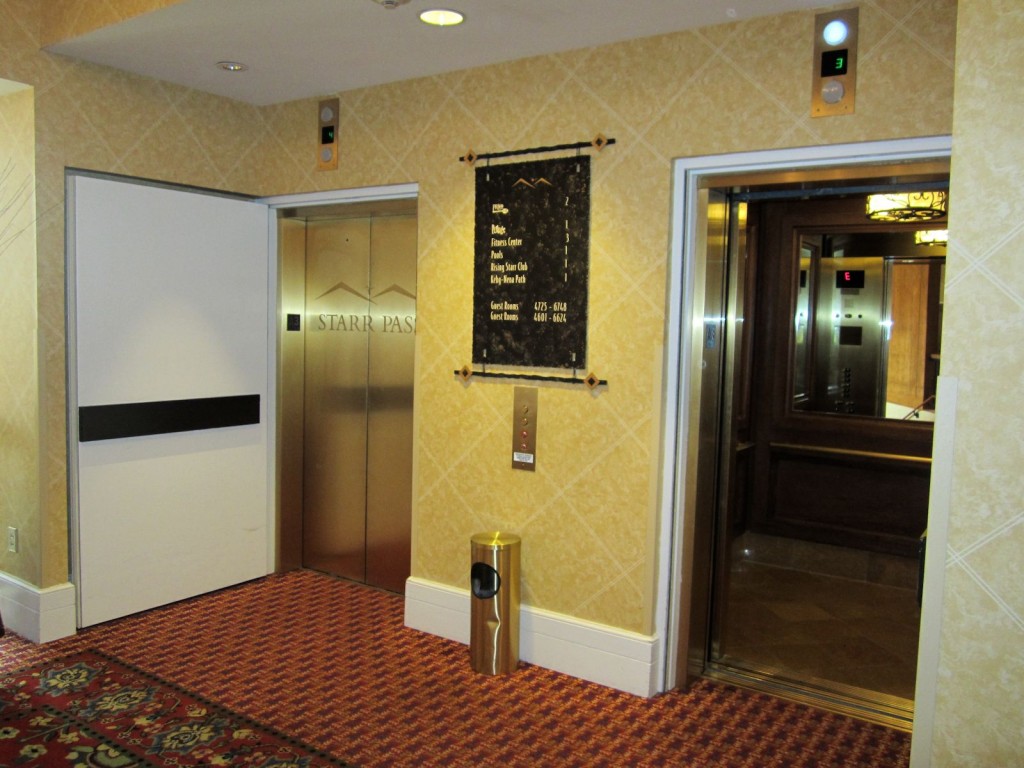 Note that there is a location where the IBC requires doors to meet the UL 1784 requirements without the artificial bottom seal – smoke and draft control assemblies installed as elevator hoistway doors where no elevator lobby is provided (shown in the photo at left). The reason for this is that in a fire affecting an elevator hoistway, the neutral pressure plane would not necessarily fall at 40 inches above the bottom of the door, so we can’t assume that a door bottom seal is not needed. You may also consider specifying or supplying door bottom seals on doors leading to pressurized stairwells, to help maintain the pressure within the stair.
Note that there is a location where the IBC requires doors to meet the UL 1784 requirements without the artificial bottom seal – smoke and draft control assemblies installed as elevator hoistway doors where no elevator lobby is provided (shown in the photo at left). The reason for this is that in a fire affecting an elevator hoistway, the neutral pressure plane would not necessarily fall at 40 inches above the bottom of the door, so we can’t assume that a door bottom seal is not needed. You may also consider specifying or supplying door bottom seals on doors leading to pressurized stairwells, to help maintain the pressure within the stair.
Circling back to the original question – whether terminated stops are acceptable for fire door assemblies, the answer in most cases is “yes.” UL Subject 63 – Outline of Investigation for Fire Door Frames, includes the following reference to terminated stops:
7.23 Terminated stops
7.23.1 Single-unit type, pressed-steel frames and two-section type frames may be provided with terminated stops. See 7.4.3. The stops shall terminate not more than 6 inches (152 mm) above the floor line and shall be closed with a 45- or 90-degree angle.
7.4.3 Stainless-steel spats not over 8 inches (204 mm) in height may be provided on the bottom of the hinge and/or strike jambs.
This reference indicates that the maximum height of the terminated stops for a UL listed fire door assembly is 6 inches, which should be confirmed with the applicable manufacturer. As long as the frame manufacturer’s listing procedures allow the manufacture of labeled frames with terminated stops, there should not be an issue with regard to missing gasketing in that area of the opening. The gasketing can be terminated at the bottom of the stop. State and local codes may vary, and the Authority Having Jurisdiction has the final say.
This post was originally created on February 27, 2014, and was printed in the March 2014 issue of Doors & Hardware magazine.
Graphic: Doors & Hardware
You need to login or register to bookmark/favorite this content.




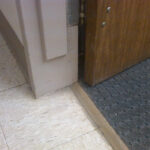
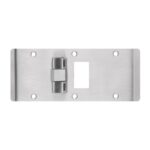

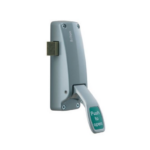
Educate me, what is the purpose of the terminated stops?
Hi Curtis –
They’re most often used in health care. The stop is terminated 6 inches above the floor (typically), to avoid having the extra corners at the floor to catch dirt and debris, and make cleaning the floor easier.
– Lori
I work in healthcare. These installations are common. I recall back in the early 80’s we had to secure a letter from our local AHJ accepting these so we could pass an accreditation inspection. Wish I had this information then! Thank you for all you do. Joe B…
Hi Lori,
Can I have your feedback please. What is the maximum height of spats on a labeled frame? Is it 6″ or 8″?
Some reference shows 6″ for hospital stops and not more than 8″ for spats.
Thanks in advance
Hi Lloyd –
Spats and terminated stops are not currently addressed in the codes or standards, so the allowable height would be determined by the frame manufacturer’s listings. A code change proposal has been submitted for the 2018 IBC which would allow terminated stops up to 6 inches from the floor. The proposal does not mention spats.
– Lori
Hi Lori,
Thanks for the information.
Any VAMC document that reference required room types and the terminated stop?
Hi Glen –
I haven’t seen a reference for that. Let me know if you find one. Also for rescue hardware.
– Lori
Lori, great article. Thanks for pointing out the rationale behind the testing.